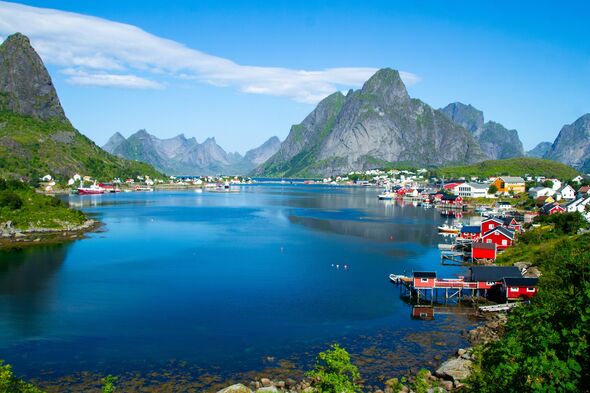Just north of the Arctic Circle lies the breathtaking archipelago of the Lofoten Islands, which has seen record numbers of tourists visiting in the last few years.
This popularity of this area of Norway extends all year round – with tourists attracted from all over the world in winter by the hunt for the Northern Lights, while in the summer they seek “coolcations”.
The weakness of the country’s currency has only accelerated the trend, making it an attractive “budget” destination.
However, in July 2023, volunteers collected no less than 40 litres of poop, abandoned by walkers, in the natural parks of the archipelago.
This is just one example of the consequences of the boom in tourism in certain regions in Norway, whose inhabitants have been complaining and now are pushing for the introduction of a tourist tax.
Inhabitants have complained about several issues with tourists, including campers parking in the wrong way, dirt left behind and ecosystems endangered.
To remedy this situation, the country’s Economy Minister Cecilie Myrseth has this month proposed the introduction of a tourist tax. The amount will be decided by municipalities, up to a maximum of 5 percent of the price of accommodation, Le Monde reported.
According to the minister, if all municipalities had imposed it by 2023, they would have collected a combined 1.5 billion krones (£108 million) that year, a sum that can be used “to help finance public goods used by tourists and residents”.
Although the number of tourists heading to Norway remains modest, certainly compared with southern European countries like Spain and France – 5.65 million foreign visitors by 2023 – it is steadily increasing.
The main issue remains that the pressure is concentrated on a few regions, including the Lofoten Islands, where some 4,000 people a day climb the 448-metre-high Reinebringen mountain in the summer, with its breathtaking views over the fjords.
Tromsø, a municipality of 78,000 inhabitants, finds itself in a similar situation, with huge cruise ships descending there, such as the Queen Mary 2 (2,600 passengers), which was docked on November 6.
According to the Norwegian Hotel Association, however, the tourist tax proposed by the government will solve nothing. Crucially, it risks penalising Norwegians, who account for two-thirds of bookings in hotels and other forms of accommodation.
According to Kristin Krohn Devold, director of the association, the problems caused by overtourism “could have been solved by targeted measures, such as a landing tax for cruises, stricter rules for parking motorhomes along the road, higher parking fees and paid toilets.”
On the Svalbard archipelago, the government wants to charge tourists embarking and disembarking from cruise ships. All visitors already pay an environmental tax of 150 kroner (£10.66).
